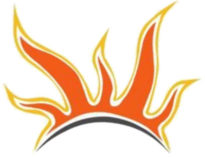Storytelling With Statistics
Storytelling With Statistics
Paul Anderson, Ph.D., Mathematics (Time Series Analysis)
Professor of Mathematics, Albion College.
Wednesdays, May 8, 15, 22, 29; 10 a.m. – 12 p.m.
A story has a plot, some characters, and a narrative told by a storyteller. The same goes for a story based on statistics. The plot is the statistical experiment, the characters are events of interest, and these events of interest are set forth by the person who designed the experiment, the storyteller.
The discipline of Statistics is query-based, so storytelling should be easy. We design an experiment with the intent of making a discovery. There are hypotheses to be tested. There is evidence to be collected with the intent of making a discovery. There is evidence to be collected and examined in the form of statistics. Finally, there is a discovery made in light of the evidence via these computed statistics, and a conclusion is rendered in simple non-technical words for public release. Story told.
In Statistics, the same basic set of essentials is used to tell each story. These essentials include the statistical experiment, the sample space for the experiment, events, and probability. We will use our first session to make good sense of these topics. Many familiar statistical experiments will be discussed in the hopes of getting a solid understanding of what a statistic is and how it is used.
For our second session, we will discover a way to determine if any of our beloved students in introductory statistics cheat on a homework assignment that involves the tossing of a fair coin. This is going to be fun, and I owe this one to our esteemed colleague, Dr. Ron Fryxell.
Overall, I would like us to be able to perform the statistical experiment at hand, so that we can gather our own evidence and tell our own story. “Storytelling with Statistics” is not just the title of our course, it is also a way of life.
Robinson 203
Robinson Hall, Albion College
Get Directions
